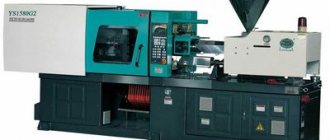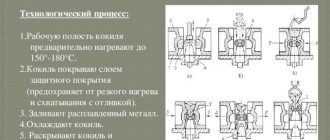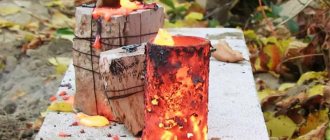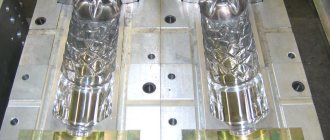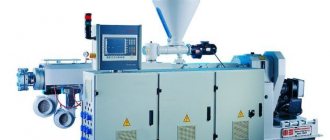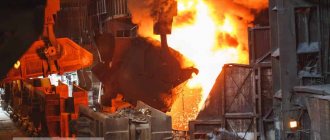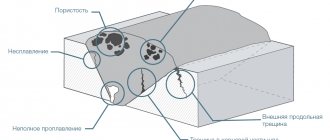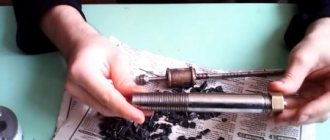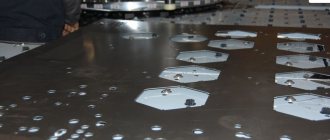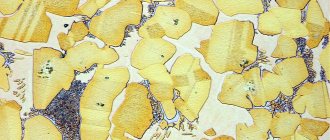Injection molding machine (illustration by Rutland Plastics)
When developing a mass-produced product for the electronics market, you will need a housing. And, most likely, it will be made of plastic. 3D printing is used for prototyping plastic parts and creating a housing prototype, and injection molding is used for mass production.
Injection molding technology is one of the most important points on the way of a product to the electronics market. Therefore, regardless of whether you have a technical background, you should understand the essence of this process at least at a basic level. Everyone knows that when developing a new device, the most expensive task is designing the electronics, but not everyone understands that when putting it into production, the plastic case will take up most of the budget.
This is primarily due to the high cost of tooling or so-called molds. In practice, the cost of molds for casting the body becomes one of the main cost items when introducing a new product to the market.
Injection Molding Basics
Injection molding is a relatively old technology, having been used since the late 1800s. Injection molding machines
have a huge screw (auger) that directs the molten plastic into the mold under high pressure. This screw drive method was invented in 1946 and is still used today.
Injection molding machines are, of course, not the same as today's high-tech 3D printing machines. There's nothing innovative about them, but injection molding is a requirement for most new hardware products.
The injection mold consists of two halves ( matrix and punch
), which, when closed, form a cavity in the shape of the desired part. Hot liquid plastic is poured into it under high pressure.
High pressure is necessary so that the plastic, in a viscous flow state, fills every corner of the mold cavity.
When the plastic cools, the two halves of the mold move apart and the finished body part is removed from them.
Developing the design and construction of a housing for mass production is a fairly complex task, and the cost of the molds themselves is in the tens of thousands of dollars. Yet injection molding remains one of the most sought-after technologies because it allows the production of millions of identical parts at an incredibly low cost per piece.
Co-injection casting
The method is based on the supply of liquid plastic components from several injection machines. Unlike a multi-gating system, here the injection of different mixtures is carried out through one point. Depending on the tasks, you can obtain castings with different characteristics. Implementation requires complex equipment with a combination of injection heads.
The joint injection method can be divided into subtypes:
* Multilayer . A variation consists of injecting several different special mixtures from two or more injection machines into the area of the future product. There are numerous options for combining raw materials. These can be different, both in color and in other properties of the plastic. For example, the outer layers are made of durable high-quality polymers, and the inner layers are made of softer plastic, expanded polystyrene (foam) or cheaper recycled materials.
Specific ingredients and color are determined by the requirements for the finished product.
* Sandwich casting . This subtype differs in that only the outer layer of plastic is visible. The technical process is carried out in 3 stages. First, composition No. 1 is injected into the stamping space. Then No. 2 is injected into the first one. At the end, a portion of the original plastic components is added again. It closes the entrance through which the second component was introduced and finally seals it, forming the outer layer.
The technology also makes it possible to obtain parts from several types of raw materials, pursuing goals from achieving special mechanical characteristics to recycling recycled polymer products.
Cost of molds
The equipment is expensive.
And most devices require multiple molds to produce, so the total cost can be quite significant. And the more parts that need to be produced using a particular mold, the more it will cost. This is due to the fact that a “long-lived” mold must operate under incredibly harsh conditions. Over and over again it is exposed to high temperatures and pressure.
These two destructive forces work to wear down the mold until, at some point, the first casting defects appear.
Hard metals are used to create durable injection molds. The hardness of a metal depends on how many castings need to be made using that particular mold. Tooling for the production of 10 thousand parts can be made from a softer metal, compared to that designed for 1 million parts.
For example, aluminum is widely used for the production of small series (up to 10 thousand pieces). For larger production volumes, they switch to a harder metal, such as steel.
However, the harder the metal, the more difficult it is to make the mold itself, and the higher its cost. In addition, obtaining steel tooling will take much longer. This is due to the fact that injection molds are created by milling, i.e. a hard mold will require an even harder milling tool.
If a company or startup is implementing a project with a small budget without external funding, it should try to find a manufacturer who will agree to amortize the costs of making molds.
For example, if the molds cost $25,000, you could ask the manufacturing plant to pay the following way: you pay a dollar for each unit produced for the first 25,000 units.
Of course, this scheme reduces the profit per unit of production, but it is still a very reasonable method of financing, especially compared to a bank loan.
Design for manufacturing (DFM)
The high cost of molds is just one of the disadvantages of injection molding.
The second disadvantage is the complexity and limitations at the development stage of the design and construction of plastic parts. Once you have a perfect working prototype made on a 3D printer, you have to spend significantly more time and money adapting it for injection molding.
The limitations of mass production should be taken into account already in the first stages of development. Some casting shape requirements, such as casting drafts, can be deferred at least until a second prototype is created.
Other requirements, such as uniform wall thickness and undercuts, must be implemented from the very beginning.
Casting bias
The main challenge when working with injection molded parts is to remove them from the mold correctly.
Once the plastic has cooled, the two halves of the mold open to reveal a new molded plastic part. Any 3D injection molding design must include a molding or process slope to fill the mold and release the finished product smoothly. Molding draft is essentially a small angle of inclination that is added to any vertical surfaces that coincide with the direction in which the product is removed from the mold. In most cases, 1-2 degrees is enough.
Examples of correct implementation of undercuts. Image courtesy of ICO Mold.
Some experts believe that undercuts should be implemented in the 3D model from the very beginning.
While accounting for undercuts early in design is important, it creates unnecessary complications when creating early prototypes. Therefore, it is better to add them to the project when you are completely confident in your prototype. Those. In most cases, undercuts should be added after the first or second version of the prototype.
Ejector pins
Ejector pins or pushers
are used to remove plastic parts from the mold. As the name suggests, these are small cylindrical pins that push the part out of the mold.
The pushers do not have a standard position, so you will have to think about where they will be located. Ideally, they should be located in the strongest part of the casting to prevent it from deforming when removed from the mold.
It is worth considering that ejector pins tend to leave small marks on the product. If you look closely at most plastic parts, you can see these tiny round marks that appear as the mold is ejected.
This is worth considering when developing a product. Try to ensure that the pushers contact the casting in places that are not critical to the appearance of the product. You can even try to hide the pusher marks under a label or logo.
Double push stroke
Some plastic parts cannot be removed from a simple two-part mold in one step; in such cases, inclined pushers and a double ejection mechanism are used.
The plunger is a component of the mold that is inserted before the casting begins and then removed before the main parts of the mold open. The inclined pusher moves perpendicular to the direction of movement of the two mold halves.
It is worth every effort not to use a double ejection mechanism, as it greatly increases the complexity and cost of the mold.
One of the main techniques that allows you to avoid double extrusion is to avoid using undercuts. An undercut is a protrusion or depression on the surface of a casting that prevents the product from being pushed out of the mold in one pushing stroke.
The situation with undercuts can often be corrected by adding a groove (slot) under the protrusion and using a single push instead of a double push.
In design 1, a double push stroke will be required due to the undercut. The groove in design 2 allows you to eliminate double ejection and remove the part from the mold in one stroke. Image courtesy of Proto Labs.
Uniform wall thickness
One of the important features of injection molding that has a huge impact on device design is the requirement for uniform wall thickness of the casting.
It is due to the fact that the plastic poured into the mold must cool at the same rate over the entire surface of the part. If cooling is uneven, the part may become deformed. Therefore, when designing an injection molded housing, ribs are used instead of thicker sections. Correctly designing a part with uniform wall thickness definitely requires experience.
Using a double push stroke and uneven wall thickness of the casting are two of the most common mistakes made by 3D designers who are not familiar with the technical limitations of injection molding.
It is worth making sure that the 3D modeling of your device is carried out by a specialist who is familiar with this technology.
Examples of structures with the same wall thickness. Image courtesy of ICO Mold.
Radius/corner rounding
Ideal corners and edges of parts are impractical for injection molding. The molten polymer will not be able to evenly and completely fill the entire sharp-edged mold, even under high pressure conditions. At least, you shouldn’t hope for it with large production volumes.
An example of a correct angle design. Image courtesy of ICO Mold.
All edges and corners should be rounded or beveled so that the polymer fills them evenly and completely.
Cold ducts vs. hot ducts
Cold runner/hot runner plastic feed
are variations of a gating system that directs molten polymer into mold cavities.
The wide gate allows the polymer to flow freely at lower pressures. However, wider channels require more time for the plastic to cool and create more production waste, both of which affect the cost of the part.
On the other hand, a narrow gate channel reduces cooling time and material waste, and ultimately minimizes casting costs. However, it has the disadvantage that a narrow channel requires higher pressure to force the molten polymer into the mold.
There is a solution that allows the use of narrow channels at low pressure - the hot runner system.
Heating elements are installed directly into the mold along the channels, which maintain the polymer in a more liquid state, thanks to which the plastic fills the mold at a lower pressure.
Unfortunately, you have to pay for everything, and hot channels also have their disadvantages: additional complexity in the manufacture of equipment, which always results in additional costs.
In most cases, at least initially, it is better to use channels without heating elements, i.e. cold runner gating system. It's always a good idea to start with the simplest and least expensive solution.
Form parting line
If you look closely at any plastic part, you will see what is called a parting line.
It will be located at the junction of the two parts of the mold. This junction of the two halves is never ideal; a little polymer always flows out along the contour. As the mold ages and wears, this leakage becomes more noticeable.
It is very important to choose the optimal location for the parting line. Ideally, it should be placed on an invisible part of the device.
Working on a vertical injection molding machine
This technology differs from the commonly used one in that a vertical type injection molding machine is used, and the mold also opens in the vertical direction. The method is good for small-scale production, because It is possible to use molds that are simpler and less expensive to manufacture. Vertical LPD is also widely used when using embedded elements (usually metal). The main disadvantage inherent in such casting is the complex automation of the process - products cannot fall out of vertical molds and they have to be removed manually or by robot.
Single and multiple molds
At a certain stage of production, it becomes possible to reduce casting time due to multiple molds (they are also called multi-cavity molds).
They are used to increase production speed and reduce the cost of workpieces. Multi-place molds, as the name suggests, allow you to create multiple copies of a single part with a single pour of polymer. Just don’t use these molds at the start until the process is debugged and ideal castings have not yet been created from single molds. It is advisable to produce at least several thousand units of products before switching to multi-piece molds.
As a rule, entrepreneurs on a tight budget make the most of their one-piece molds, unless the manufacturer itself finances the production of their molds.
Injection pressing
This technological process differs from the standard one in that the polymer material is injected into a slightly open mold (in this case it is appropriate to use this name for the equipment) a short time before its final closure. The final compaction of the polymer and the formation of the finished product are carried out when the mold is completely closed. Various products are made from both thermoplastics and thermosets using injection molding. The method is applicable in the case of insufficient characteristics of the injection molding machine for a given casting, in particular the clamping force. Also, the quality of such pressing on an injection molding machine is less dependent on the orientation of macromolecules during injection (anisotropy), which can improve the quality of the product in terms of less shrinkage (if necessary), better mechanical properties and less warping.
Family molds
In most cases, a separate mold is used for each individual plastic part within the device.
The body will need at least two parts: upper and lower. But most products will require more than two plastic parts. Molds are very expensive, and buying multiple molds at once is a major financial hurdle, so you need to aim for a minimum number of plastic parts.
An alternative option for minimizing the required molds is to use a special type of multiple molds, the so-called family molds. The family mold allows you to combine several different parts into one casting.
While the typical multi-slot form creates multiple copies of the same part, the family form creates different parts.
Sounds good, right? Unfortunately, not everything is so simple, you have to pay for everything. The main problem with family molds is that every piece has to be roughly the same size.
Otherwise, one of the mold cavities will be filled with molten polymer before the others. Family molds should be designed so that all cavities are filled with polymer at approximately the same rate. This clearly limits the possibilities of their application. It is unlikely that all body parts will be the same size.
Areas of application
Plastic injection molding has been used in mass production for over 50 years. Thanks to this, it has become possible to produce a variety of plastic products of different sizes and weights, structures and thicknesses. From the smallest, weighing up to several milligrams, to large ones, weighing tens of kilograms.
The main areas of use of plastic products produced by injection molding:
- Electronics (device housings are made of plastic).
- Automotive industry. Plastic parts for cars are also produced using this technology.
- Medicine (polymers are used to make housings for medical devices).
- Construction and repairs (interior finishing parts, tanks, boxes).
Selection of materials
Today we have at our disposal an incredible variety of polymers with different characteristics.
The two most common polymers in electronics manufacturing are polycarbonate (PC) and ABS plastic (ABS/acrylonitrile butadiene styrene). Polycarbonate has much higher impact resistance and appears to be of higher quality compared to ABS. However, PC is, of course, more expensive than ABS.
Polycarbonate is the most popular plastic in higher-end products; it is loved for its strength and aesthetic appearance.
If surface quality is critical for a new product, then it is better to opt for PC. If the product is designed for a low price category, then it is better to choose ABS.
Where to work with molds?
Where is it better to produce plastic parts for your device: at home or in China?
In most cases, it is better to start working with a local manufacturer in your country (unless you live in a country where the industry is very weak). Then, when volumes exceed 10 thousand pieces, you can switch to a Chinese manufacturer to reduce costs.
China is simply the ideal choice for large-scale production. Just don’t start the initial development and debugging of the process there. With local manufacturers, any issues can be resolved much easier and faster.
Make the first launch and the first mistakes at the local level, and then move production to China.
Translator's note: it is important to consider that transporting a mold from one country to another (and even more so to China from Europe) is a complex and expensive undertaking. Therefore, we select local prototype manufacturers for our clients, and if the series is large in total, we immediately place it in China with the expectation that the mold will be amortized over several iterations of production. After all, if you start mass production from local manufacturers, then the mold will be local, and transporting it to China or creating a second mold in China will not justify itself.
Horizontal injection molding machine
Typically, a horizontal injection molding machine is used with a standard automatic mold. There are several types of molds for injection molding of plastics:
- Cold duct. This is a simple and cheap system in which the sprue hardens along with the product.
- Hot runners. In this case, the material is fed into the mold heated and the sprue is not formed.
This type of plastic and injection molding molding is used in most cases and is suitable for the manufacture of various types of products.
